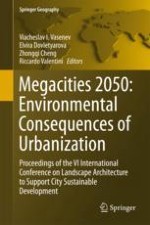2018 | OriginalPaper | Buchkapitel
Chemodiagnostic by Lipid Analysis of the Microbial Community Structure in Trace Metal Polluted Urban Soil
verfasst von : V. A. Terekhova, N. V. Verkhovtseva, M. A. Pukalchik, I. R. Vodolazov, V. K. Shitikov
Erschienen in: Megacities 2050: Environmental Consequences of Urbanization
Aktivieren Sie unsere intelligente Suche, um passende Fachinhalte oder Patente zu finden.
Wählen Sie Textabschnitte aus um mit Künstlicher Intelligenz passenden Patente zu finden. powered by
Markieren Sie Textabschnitte, um KI-gestützt weitere passende Inhalte zu finden. powered by
